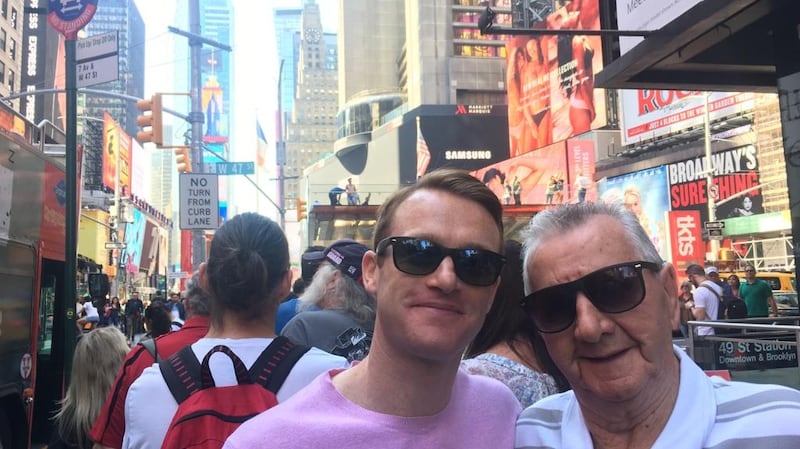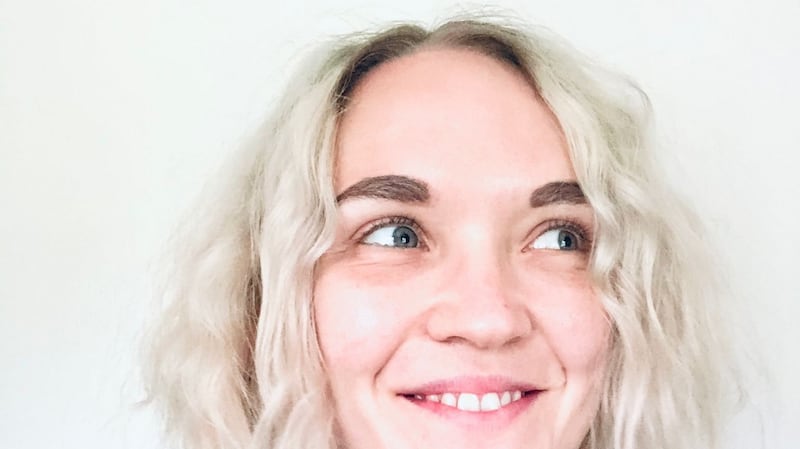Looking after her elderly Irish neighbour in Boston during the pandemic made Dubliner Niamh Fitzgerald reconsider whether she wanted to stay in America long term.
Her neighbour was undergoing radiation treatment during lockdown and Fitzgerald says she was “so vulnerable, so dependent” and had “no family around her” except for the Irish community, who stepped in to look after her.
But the experience left Fitzgerald with a longing to move home. “It really struck me that I don’t want to die here,” she says.
Fitzgerald has lived in Boston for seven years. She is a permanent resident, owns a home, and works as a behavioural analyst in the city’s public school system.
When she got her job at Boston City Schools, Fitzgerald moved to Dorchester, historically Irish and now one of the most diverse neighbourhoods in the city.
She says she didn’t plan on only having Irish friends, but the way it worked out, her neighbours, roommate and closest friends are Irish. “I don’t know how it happened, we just attracted each other.”
Dorchester also has a higher number of people living in poverty compared with the national average, according to statistics from the Census Bureau. Fitzgerald says some of the families she works with depend on the school for breakfast, lunch and snacks for their children, which was more difficult to access when schools closed during the pandemic.
‘A real eyeopener’
Providing therapy to some of the children over Zoom when schools were doing distance learning was incredibly challenging, she says, and provided an insight into living conditions in parts of the city. “Some of the social welfare housing over here is just disgraceful: cockroaches, tiles coming off from the ceiling. It was a real eye opener to poverty in America.”
Fitzgerald travelled back to Dublin a couple of times over the last two years to visit family. Being in Boston for most of the pandemic has made her think about where she wants to put roots down. Fitzgerald says she plans to move back to Ireland permanently this year.

Brian Farrell, originally from Co Wicklow, first moved to New York City for college on a running scholarship.
He says moving from Ireland, where he was one of the best runners in the country, to being number nine on his college team was a lot to deal with as a young adult far from home for the first time. “It’ll either make or break you and I think for me, it kind of made me.”
After four years as a college student, Farrell briefly returned to Ireland before then moving back to New York 10 years ago with his husband, who is also Irish.
Back at the beginning of the pandemic, when death rates were rising and New Yorkers were leaving in their droves, Farrell recalls an eerie feeling in the city. “When you take the people out of the city and there’s nothing there – it’s a very unusual feeling. I’ve never felt it before.”
He was furloughed in 2020 from his role at a not-for-profit that organises the New York City Marathon and various other races. He spent the time figuring out what he wanted to do next and ended up switching careers and moving into the financial services sector.
“It was a really unusual place to be because I was an active employee but I just wasn’t earning any money. So I was affected but my husband’s job was not, luckily.”
While furloughed, Farrell spent a lot of time running through Central Park and other areas of the city that had emptied out during the pandemic. “I took my bike down to the West Village area and all I could see were just removal trucks. There was like a mass exodus out of the city.”
Postal service data published by various US media outlets shows that more than 300,000 requested a change of their address to areas outside of the city. At least another 100,000 people did so in 2021.
Another study, by location analytics company Unacast, analysed phone location data, which suggests about 3.75 million people left NYC in 2020, resulting in approximately $34 billion in lost income. However, about 3.57 million people also moved into the city during that same period, the report shows.
‘Nobody there’
It was sad to see so many people leave the city. “When you take away the people, the city is only an empty shell. You could nearly see tumbleweeds down the street. I went down to Times Square and there was nobody there, like nobody, for the first couple of months.”
At that stage, Farrell says he wanted to go back to Ireland pretty badly, mainly to see his family. “Even if I wanted to go home, I wasn’t able to, and that had an effect on me, for sure.”
He did eventually get home in December 2020 and has been back twice more since. But being away from family was tough, especially when friends and family at home were “together a lot of the time and communicating on a regular basis”.
“It’s often the people who have emigrated who need to be the ones to stay in touch and make the effort,” he said.
Things in New York are almost back to normal now, Farrell says, and with people back in the office, there’s a buzz around the city again.

Iseult Gillepsie moved to Wisconsin in 2016 to pursue a PhD at the University of Wisconsin-Madison, having lived in New York for a stint before that.
She spent the pandemic living between her home in Madison and Ireland. Her partner, Ronan Denyer from Sligo, is based in Vancouver. When the US-Canada border closed for non-essential travel in March 2020, it became challenging for them to see each other.
However, Denyer happened to be visiting Gillepsie in Madison when the pandemic hit, so the pair ended up extending the visit to three months. They also spent a lot more time in Ireland together, due to the border restrictions in Canada and the US.
One of the main challenges for Gillespie was the professional uncertainty of working at a university, in the humanities, during a pandemic. On a practical level, having to navigate teaching online was difficult. But on a deeper level, the pandemic made her think about the role of academia in public life, about the welfare of her students and about accessibility in education more generally.
““One of the challenges of the humanities, even before the pandemic, was why does this matter?” she says. “Why do we want to read books and analyse poetry and critical theory when it feels abstract? Why are we reading Shakespeare when people have family in the hospital or there’s all these protests going on?”
Gillespie taught classes on Shakespeare and literature and social justice during the pandemic, when movements such as Black Lives Matter gained strength and momentum.
She encouraged her students to take some relief through the texts they were reading, but says that reading and writing during Covid was not purely escapist. “I truly believe that reading and culture can help us process issues in really unexpected ways.”
In her Shakespeare classes, they talked about how mental health works in Hamlet, how masculinity and the decaying body functions in Macbeth, and how political chaos is portrayed in the history plays. They also talked about the plague in Romeo and Juliet.
Another change during the pandemic, she says, was how online learning made universities think about accessibility in education.
“Ideally we would have thought about accessible learning on this scale before the pandemic but of course the universities didn’t do that. It forced instructors to adapt and think about what students were going through. How would they teach people who were long distances away or who were struggling with their physical and mental health?”
By a certain stage of the pandemic, Gillespie says, it became difficult for students to contribute to discussions. “That’s not testament to their not being smart enough, it is just proof of burnout.”
Gillespie has had the American pandemic experience and the Irish one – she came home for six months from August 2020 to January 2021. “The pandemic is so politicised [in the US] and it’s made the polarisation that already exists just much more visible.The healthcare inequities are ever more visible, but I knew they existed already,” she says.
‘Strong emotional connect
For Gillespie, who has been in America for six years and loves living there, visiting Ireland frequently plays an important part in sustaining her life in the US.
“I don’t feel as comfortable being so far away from my family as I used to. I have a strong emotional connection to home that just got heightened and intensified by the pandemic and also by the fear that I would be trapped in Wisconsin.”
She has always been a homebody and says that uncertainty around international travel now and in the future has made her consider moving home. “I do feel attached to home and I always knew that I wanted to move home if mobility is limited and time is short.
“At a certain point you have to make the choice to go home.”











